Pinus rigida is commonly known as Black Pine, Hard Pine, Northern Pitch Pine, Torch Pine, or Yellow Pine, this resilient native plant belongs to the Pinaceae family. Its species name, rigida, highlights its remarkably stiff needles. Originating from Canada and parts of the northeastern United States, the pitch pine thrives as a woody perennial.
Historically, this tree has played an important role in both traditional and industrial uses. The Iroquois valued its pitch for treating burns, cuts, and boils, while its resin-rich wood was prized for shipbuilding and railway construction due to its resistance to decay.
A robust and versatile tree, the pitch pine is a vital part of its native ecosystems and a valuable resource for various applications.
| Common name | Black Pine, Hard Pine, Northern Pitch Pine, Pitch Pine, Torch Pine, Yellow Pine |
| Botanical name | Pinus rigida |
| Family | Pinaceae |
| Species | rigida |
| Origin | Canada, portions of northeast US |
| Life cycle | Woody |
| Plant type | Native Plant |
| Hardiness zone | 4, 5, 6, 7 |
| Sunlight | Full Sun |
| Soil condition | Sand |
| Soil ph | Acid |
| Drainage | Well-Drained |
| Growth rate | Medium |
| Spacing | 24 – 60 ft. |
| Harvest time | Fall |
| Flowering period | Spring |
| Height | 4- 60 ft. |
| Leaf color | Gold, Yellow |
| Fruit color | Brown, Copper |
| Stem color | Brown, Copper |
| Garden style | Native Garden |
| Uses | Slope/Bank |
I. Appearance and Characteristics
Pinus rigida, the pitch pine, is a small-to-medium-sized pine. It is native to eastern North America, primarily from central Maine south to Georgia and as far west as Kentucky.
It was given its scientific name, Pinus rigida, by British botanist Philip Miller. It belongs to the family Pinaceae and the subgenus Pinus (formerly Diploxylon), along with other hard pines.
The pitch pine is irregular in shape, but grows to 6–30 meters (20–98 ft)). Branches are usually twisted, and it does a poor job at self-pruning. The needles are in fascicles (bundles) of three, about 6–13 centimeters (2+1⁄4–5 inches) in length, and are stout (over 1 millimeter or 1⁄16 inch broad) and often slightly twisted. The cones are 4–7 cm (1+1⁄2–2+3⁄4 in) long and oval, with prickles on the scales.
Trunks are usually straight with a slight curve, covered in large, thick, irregular plates of bark. Pitch pine has an exceptionally high regenerative ability; if the main trunk is cut or damaged by fire, it can re-sprout using epicormic shoots. This is one of its many adaptations to fire, which also include a thick bark to protect the sensitive cambium layer from heat. Burnt pitch pines often form stunted, twisted trees with multiple trunks as a result of the resprouting. This characteristic makes it a popular species for bonsai.
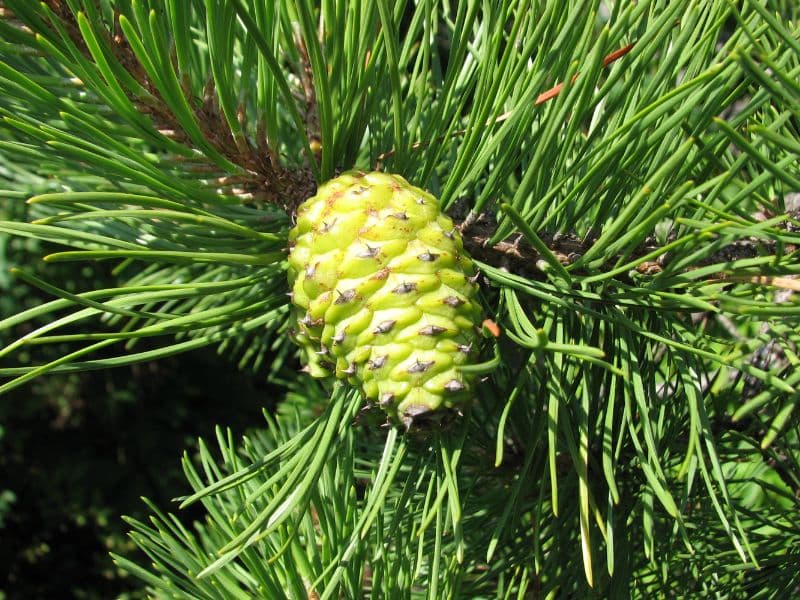
Pitch pine is rapid-growing when young, gaining around one foot of height per year under optimal conditions, until growth slows at 50–60 years. By 90 years of age, the amount of annual height gain is minimal. Open-growth trees begin bearing cones in as little as three years, with shade-inhabiting pines taking a few years longer. Cones take two years to mature. Seed dispersal occurs over the fall and winter, and trees cannot self-pollinate. The lifespan of a pitch pine is about 200 years or longer.
II. How to Grow and Care
Sunlight
Pitch pine thrives best under full sun conditions, where it can receive unfiltered sunlight for at least six hours daily. This exposure maximizes pitch pine’s growth potential and health. While pitch pine has a tolerance for partial sun, where light is dappled or mixed with shade, prolonged periods away from optimal light may result in slower growth and reduced vigor.
Pitch pine is adept at adapting to varying light exposures, often through physiological modifications such as needle adjustments. Ideally, pitch pine should be planted outdoors in locations where there is clear access to sunlight for the majority of the day to ensure robust development.
Temperature
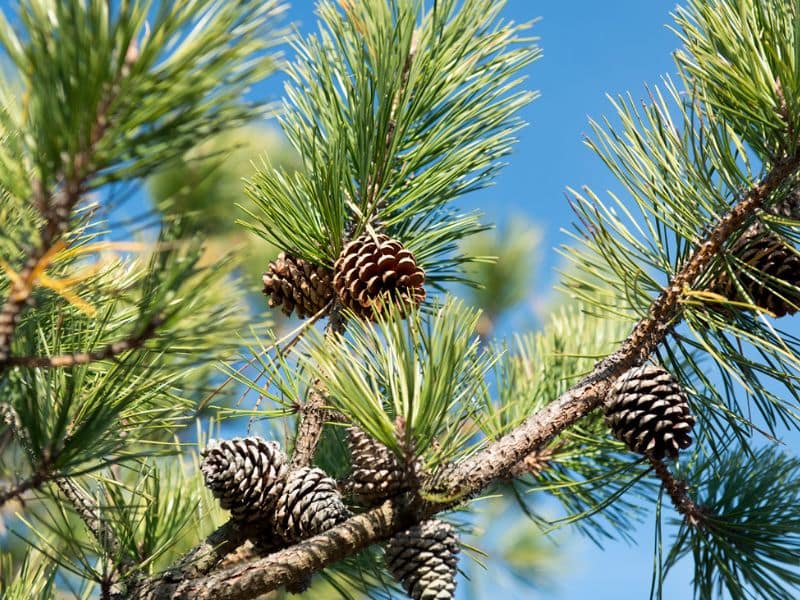
The pitch pine is mostly native to the northern hemisphere and can withstand many challenging environmental conditions. Tolerant of temperatures ranging between -60 to 50 ℃, making it suitable for hardiness zones 11 and below, this is a plant that grows best in well-drained, deep and moist soil.
Watering
Originating from the sandy soils of eastern North America, pitch pine is adapted to withstand periodic droughts, maintaining a balance in water retention. Its watering needs are moderate, requiring hydration once every 1-2 weeks to mimic its natural environment. Pitch pine thrives outdoors where it can benefit from the interplay between rainfall and its adaptive root system, which is accustomed to sporadic moisture availability.
As an evergreen plant, pitch pine’s needle-like leaves retain water efficiently, reducing the need for frequent watering and allowing it to sustain through various seasons.
Soil
Pitch pine can grow in a variety of different soil types, including bare mineral soil, sandy soil, volcanic ash, calcareous soil, limestone soil, and everything from dusty soil to red soil. Since it is resistant to drought, it will even grow in barren landscapes. However, it grows best in loose, fertile, well-drained, and slightly acidic soil. In the case of too much alkalinity, needles of potted plants will turn yellow and fall, so it is best to use natural mountain soil in pots and containers.
Fertilizing

For pitch pine, use balanced nutrition fertilizers to nurture growth and enhance resilience. Fertilize biannually, in spring and autumn, with a slow-release formula to match pitch pine’s moderate nutrient needs. Maintain a light hand, favoring under-fertilization over excess, to prevent root burn and environmental runoff. Adjust to pitch pine’s life stages, increasing dosage slightly as it matures. Always water thoroughly post-application to aid nutrient absorption. These practices will sustain pitch pine’s health and vitality across seasons.
Pruning
For an indoor potted plant, any dead, diseased or damaged branches should be removed. You can then adjust the tree’s shape by pruning branches, pinching buds, and trimming leaves, giving you a better ornamental effect. Prune the plant before all of its needles fall off, so as to obtain a compact shape, richer lateral and side branches, and a better form overall. Pruning should be done during the dormancy period, so as to prevent excess loss of sap and damage to the plant’s vigor.
For a plant in a garden, dense lateral branches should be pruned so as to improve the survival rate. Remove excess lateral branches during the vigorous growth period based on needs, focusing on encouraging the trunk to grow tall and straight. Cut off any diseased or dead branches right away, so as to prevent the spread of pathogens.
Propagation
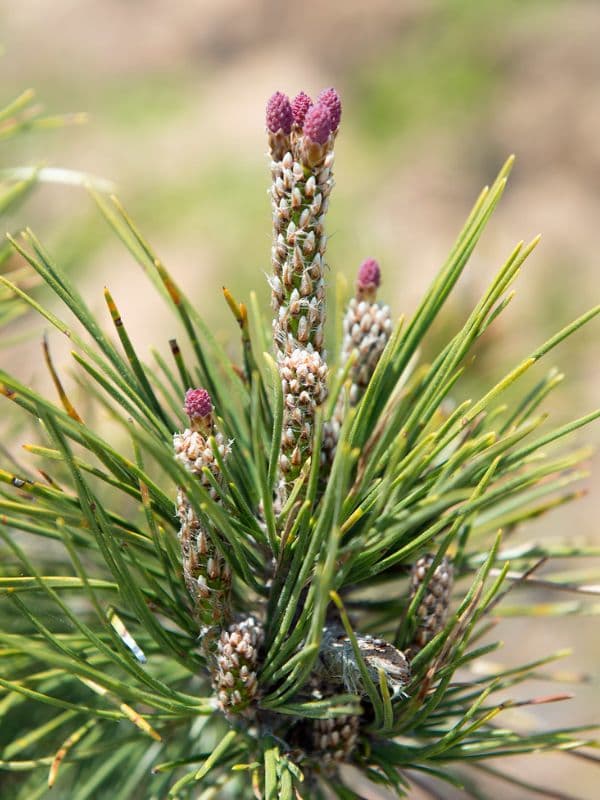
Pitch pine propagates ideally in autumn or winter through layering, cutting, or sowing. Its propagation is moderately difficult, but successful signs include new growth and root establishment. Moisture management is crucial for successful propagation.
Transplanting
The best time to transplant pitch pine is during early spring (S1) to late autumn (S2). This timing is ideal as it allows pitch pine to establish its roots before the stress of a hot summer or freezing winter. Choose a sunny spot with well-drained soil for successful translocation. Remember, pitch pine is drought-tolerant, hence avoid overwatering.
III. Uses and Benefits
- Ornamental uses
The twisting growth of pitch pine makes it an attractive specimen tree. It can be planted in native and woodland gardens, where it will thrive even in locations where other trees won’t take. This pine is also a food source for various native animals and thus an exciting addition to wildlife gardens. The tolerance of adverse conditions makes it a suitable and interesting urban landscaping tree.
- Other uses
Pitch pine is not a major timber tree due to the frequency of multiple or crooked trunks, nor is it as fast-growing as other eastern American pines. However, it grows well on unfavorable sites. In the past, it was a major source of pitch and timber for shipbuilding, mine timbers, and railroad ties because the wood’s high resin content preserves it from decay. As such, it has also been used for elaborate wood constructions, e. g. radio towers.
Pitch pine is currently used mainly for rough construction, pulp, crating, and fuel. However, due to its uneven growth, quantities of high quality can be difficult to obtain, and large lengths of pitch pine can be very costly.
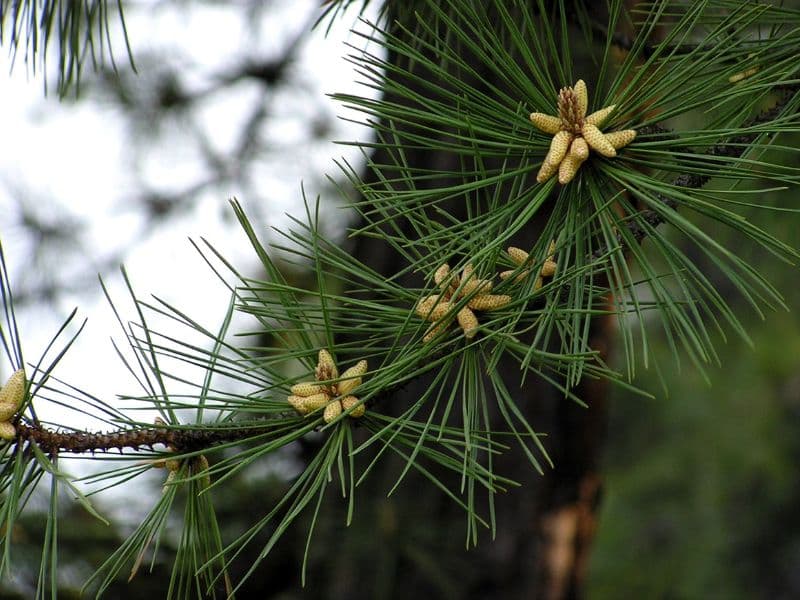
Archaeology indicates that the Iroquois, Shinnecock, and Cherokee all utilized pitch pine. The Iroquois used the pitch to treat rheumatism, burns, cuts, and boils. Pitch also worked as a laxative. A pitch pine poultice was used by both the Iroquois and the Shinnecock to open boils and to treat abscesses. The Cherokee used pitch pine wood in canoe construction and for decorative carvings.
Pitch pine is known to cross with pond loblolly and shortleaf pines. One of those crosses is the pitlolly pine (pinus x rigitaeda), a natural hybrid between the loblolly pine and the pitch pine. This hybrid combines the tall size of the loblolly pine and the cold-hardiness of the pitch pine. This hybrid was used as a substitute for loblolly pine and has been extensively planted in South Korea.
Find Where to Buy the Best Pitch Pine (Pinus rigida)

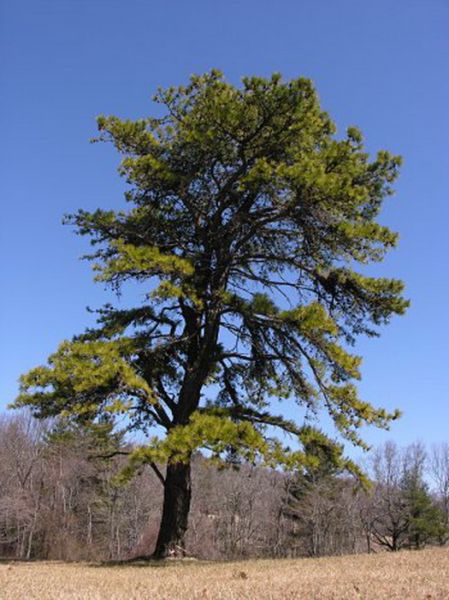



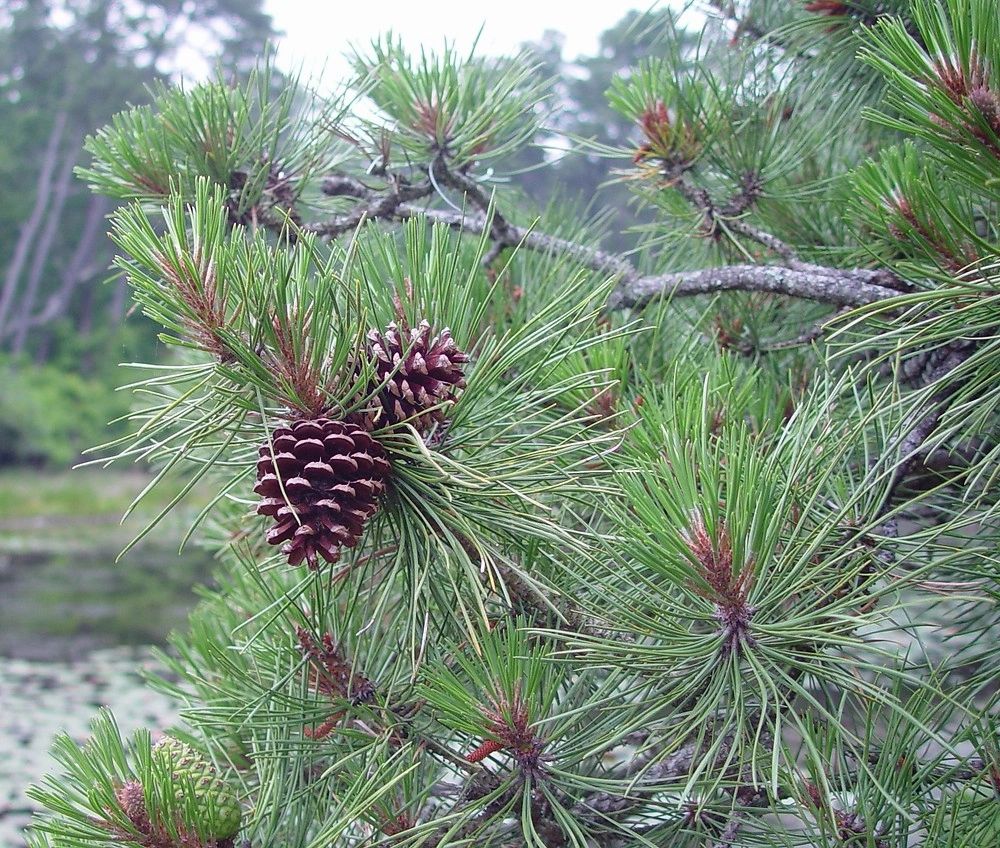












Leave a Reply